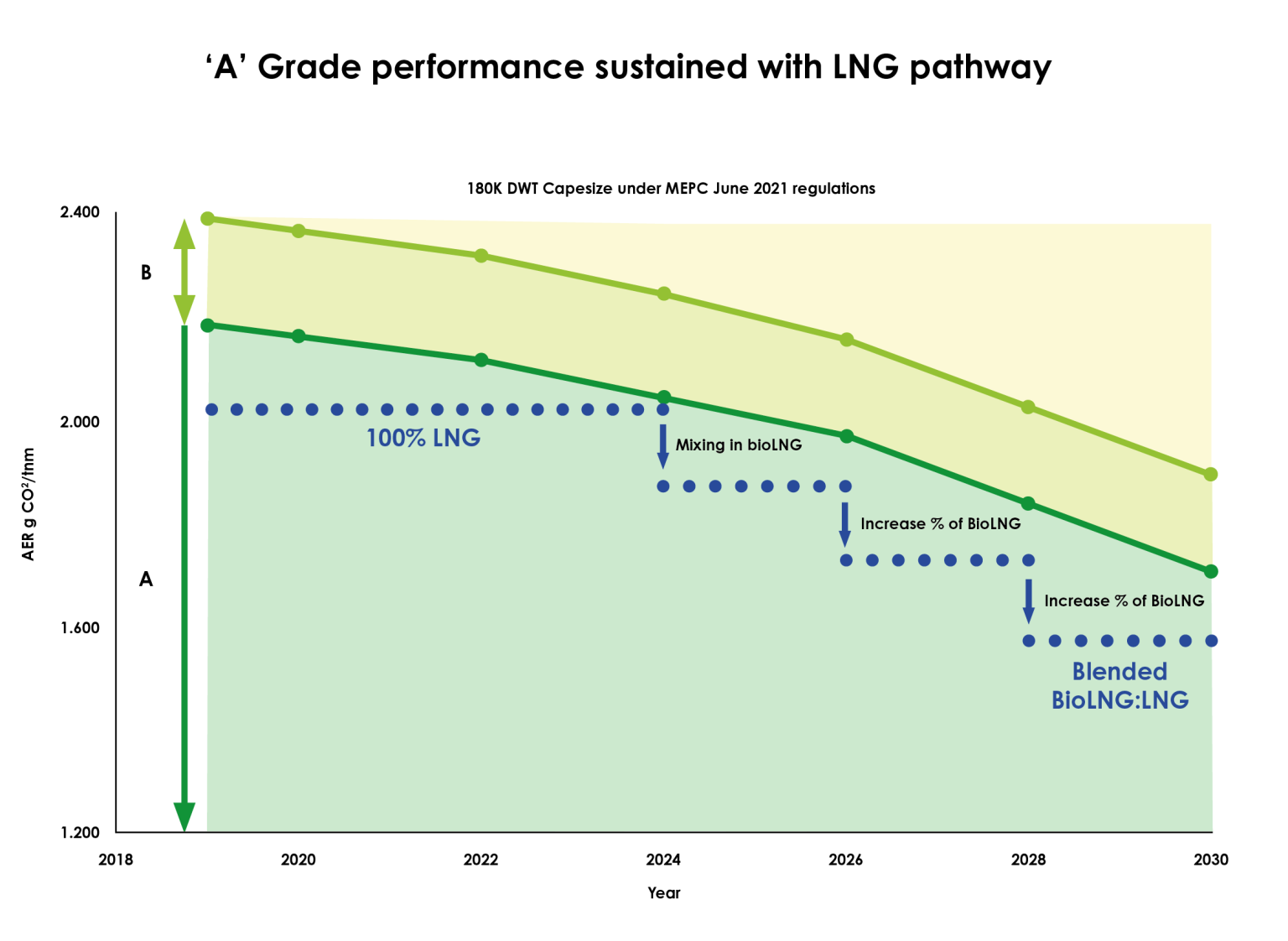Analysis from multi-sector marine fuel coalition, SEA-LNG, has found that LNG-fueled vessels will be able to continue operating as normal under the system until after 2030, while fossil LNG blended with bioLNG and renewable synthetic LNG will further extend compliance to 2050 and beyond.
The analysis compared emissions for two identical 180k DWT Capesize vessels, one using conventional, oil-based marine fuels the other using LNG as a marine fuel.
The results showed that the LNG-fueled vessel immediately rated two grades higher than the conventionally fuelled vessel. LNG can be the difference between having a ‘moderate’ C-rated ship and having a ‘major superior’ A-rated ship on the IMO’s CII scale.
SEA-LNG added that LNG-fueled vessels can also gain improved carbon intensity ratings by adopting drop-in carbon-neutral bioLNG in the short to medium term, or zero-carbon renewable synthetic LNG in the longer term.

The analysis showed that for every 10% increase in the content of these fuels in a blend with traditional LNG, the vessel gains two-years of additional compliance. By using bioLNG and renewable synthetic LNG, a vessel commissioned yesterday, today and in the future can retain a favourable CII rating as major superior A or superior B throughout its lifetime.
Clearly, LNG will offer a competitive advantage to ship owners and operators as charterers prefer engaging the higher-performing A and B rated vessels necessary to meet their own GHG emission reduction commitments
stated John Hatley, SEA-LNG Investment Committee Chairman.
CII thresholds will tighten annually, requiring operators to document vessel performance and demonstrate it has achieved the required threshold for the year. A ship’s carbon intensity rating, on an A-E scale will be officially recorded in the vessel’s Ship Energy Efficiency Management Plan (SEEMP).




























































